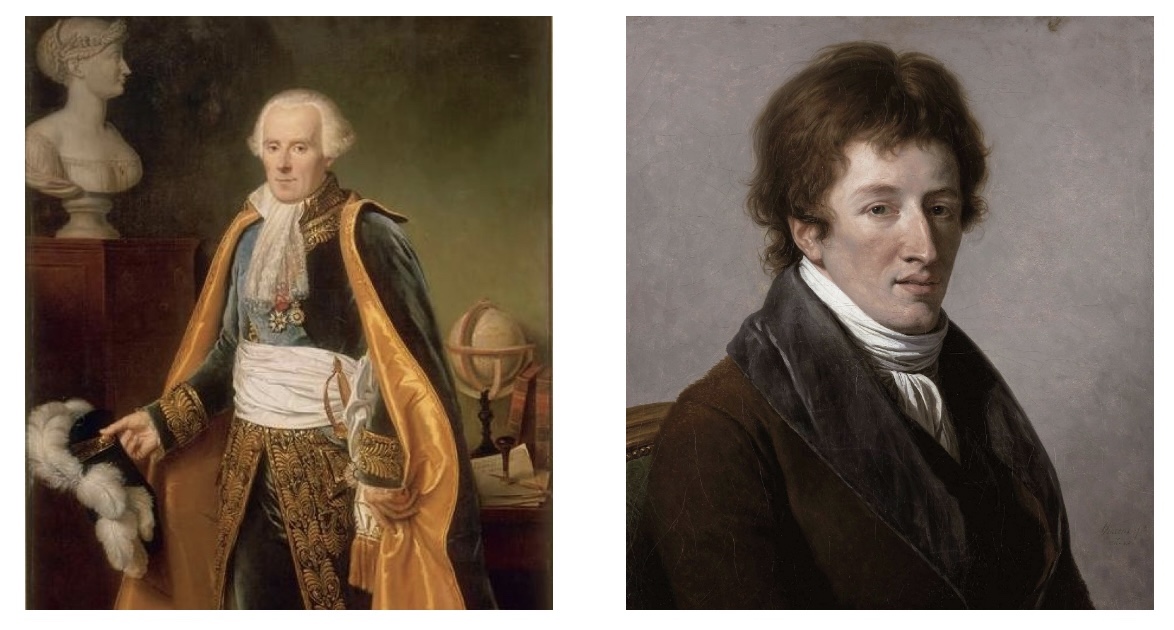Imperial Scorn

Meanwhile, Lamarck was making not just admirers but also powerful enemies: not only Cuvier, but all the members of Napoleon's scientific inner circle, and indeed Napoleon himself. Napoleon loathed Lamarck. He especially hated Lamarck's pet project of establishing a science of meteorology. Lamarck had gotten interested in meteorology, he said, when, upon first arriving in Paris, he'd been living in a garret apartment from whose window he could see nothing but clouds. Cuvier, "Eloge," v; Landrieu, Lamarck, 133; Packard, Lamarck, 79. Making a virtue of necessity, he'd become a concerted cloud-watcher, and he was the first person to classify and name the different sorts of clouds. In a work entitled "On the Forms of Clouds," he identified five sorts and examined their causes: veiled, gathered, dappled, sweeping, and grouped. Lamarck, "Sur les formes des nuages," 153. The formation and disappearance of clouds was the subject of Lamarck's first presentation Lamarck [Cotte], "Mémoire," 206. before the Academy of Sciences; and throughout the time he was working as a botanist, then as a zoologist, and finally as both at once, Lamarck retained his fascination with meteorology.
In September 1799, two months before Napoleon declared himself First Consul of France in a coup d'état, closing the Revolutionary era and inaugurating the Napoleonic one, Lamarck published the first in a decade-long series of meteorological annals, Lamarck, Annuaire météorologique pour l'an viii. offering predictions for the year 1800, the first year of the 19th century. Lamarck referred to these predictions, which he based upon the latitude and the positions of the sun and moon, as "probabilities." But they weren't mathematical probabilities: rather, they were descriptive forecasts along the lines of "from the 28th to the 31st inclusive… we will be exposed to some bad weather, rainy or stormy or windy."Lamarck, Annuaire météorologique pour 1809, 59.. He tried to present his meteorological work to his colleagues at the National Institute, but once again he was unsuccessful: this time, another of Napoleon's close scientific advisors, the mathematician and astronomer Pierre Simon de Laplace, scornfully interrupted Lamarck and attacked his meteorology as outdated, superstitious nonsense.

To Laplace, "probabilities" were highly technical calculations, the reserve of mathematicians. In contrast with Laplace's Napoleonic model of specialized, centralized, authoritative science, Lamarck's approach was open and collaborative – in fact, rather like his model of the natural world, made by the participatory activity of all living beings, especially the smallest and humblest. He invited his readers to become amateur meteorologists and to send him their feedback. Lamarck, Annuaire météorologique pour l'an viii, 93. His annals were very popular, often running into a second printing; and Lamarck also persuaded the Minister of the Interior, the chemist Jean-Antoine Chaptal, to create a government service that would receive meteorological information from all over France, with Lamarck in charge of coordinating it, the first national weather service. But in 1809, Napoleon shut down the whole operation, Lamarck, "Météorologie," 475; Landrieu, Lamarck, 138-140.both the meteorological service and Lamarck's annals. He had no love for a form of science that was descriptive rather than technical, and participatory rather than authoritative.
On a frigid day in December of that same year, 1809, the members of the National Institute awaited the Emperor in a chilly salon of the Palais des Tuileries to present to him their new publications. The savants and men of letters were dressed in green, the aides de camp in gold brocade. The astronomer François Arago, then just twenty-three, was standing near Lamarck who was now sixty-five and in ill health, though he would live another two decades. Lamarck held a copy of the Zoological Philosophy, his magnum opus in which he presented his full theory of living beings as self-making and world-making. Arago and Lamarck together wryly observed the apparent panic of each of the men around them that he might fail to receive the Emperor's notice. Arago, Mémoires, at XLV.
Napoleon at last entered the room and approached Arago as he would a new conscript, fixing him with a stare and barking "you're very young! What's your name?" Before Arago could answer, his neighbor on the left, eager to be noticed, replied "he cultivates astronomy!" Napoleon: "And what have you done?" Arago's neighbor on the right, not to be outdone, announced "he has just measured the meridian in Spain!" While Arago ruefully reflected that Napoleon must take him for a mute or an imbecile, the Emperor turned to Lamarck, who presented his Zoological Philosophy. Napoleon snatched it growling "I take [this] only out of consideration for your white hairs. Give it here!" Without looking at the book, Napoleon thrust it into the hands of an aide, while Lamarck, tears of humiliation rolling down his cheeks, tried to explain what was in it. Arago, Mémoires, at XLV.
Had Napoleon known what was in the book, with its revolutionary understanding of living nature as continually creating and recreating itself from elements, he would have liked it even less. Lamarck's natural world of inherent active powers, its substance generated and shaped by its own living denizens, was uncongenial to authoritarians.
| « Self-Making Beings | A Life-Made World » |
